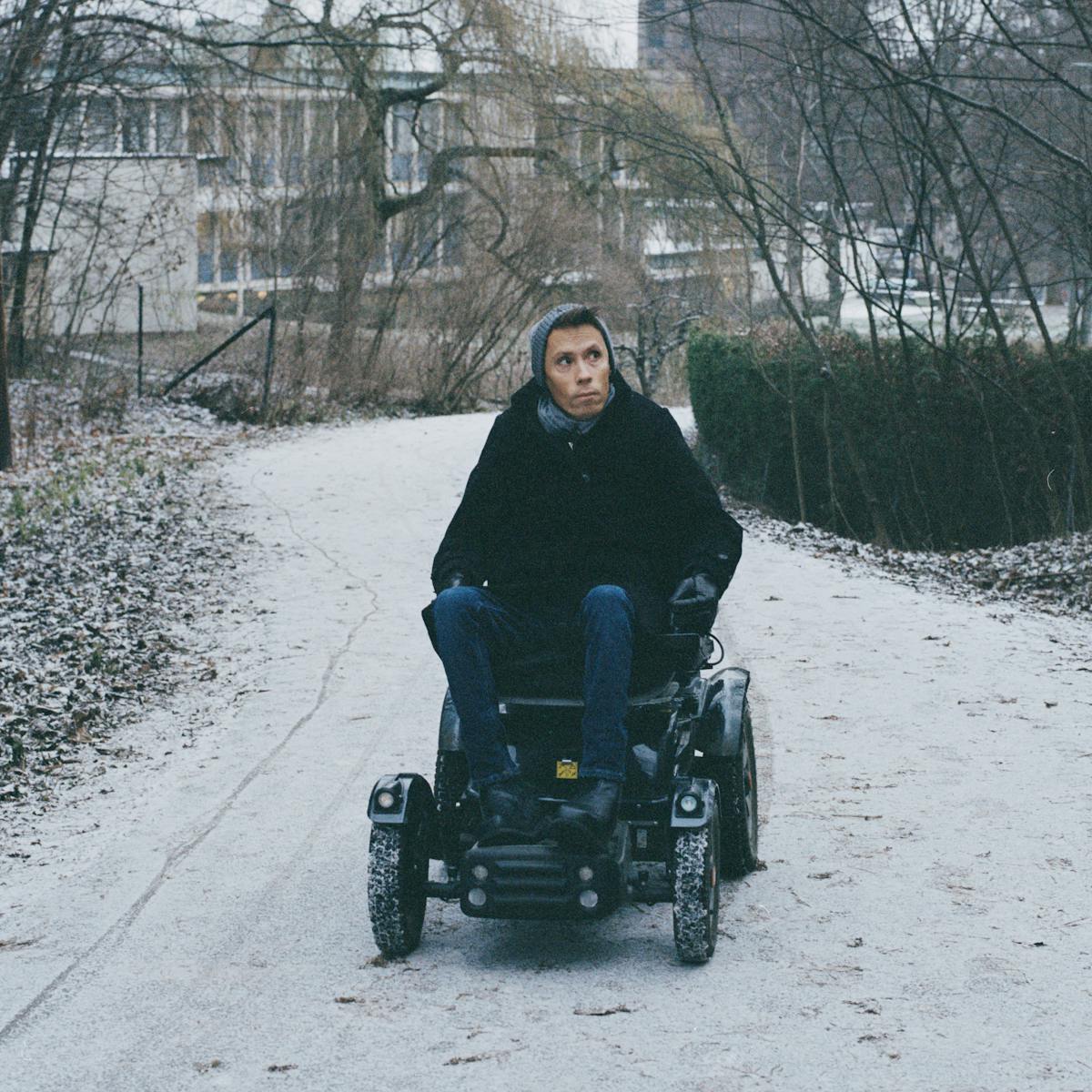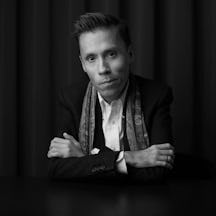Norwegian author Jan Grue began reimagining his relationship with his wheelchair after becoming a father five years ago. Observing his son’s development and fascination with his wheelchair, Grue reflects on how parenthood helped him realise that living as a vulnerable body is an incentive to creativity rather than a shortcoming.
I was born with a rare form of myopathy; I have used a wheelchair since I was eight years old. A wheelchair user is something that I am, much as I am Norwegian, or a 40-year-old man, or an academic. Most days I hardly give it any thought, any more than I think about putting on a jacket.
I don’t wake up in the morning and think, “Oh God, I use a wheelchair!” Instead, it is a certain part of my everyday life. I don’t use the wheelchair inside the apartment where I live; in my apartment, I walk. The wheelchair is parked in the entryway, and when I sit down and drive it out into the world, I do so on autopilot, just like hopping on a bicycle.
It’s only when I run up against resistance – when I puncture a tyre, or when I come to a place where there are stairs but no ramp – that I become acutely aware of the vulnerability and exclusivity that, in our world, comes with being a wheelchair user.
These reminders can be brutal. They are reminders of how the world sees me: as a cause of unease, as a disturbance – in the worst case, as an object of hate. Once, after a party in Oslo, I descended to the street to find that someone had systematically demolished my wheelchair. Because it had been parked unguarded; because it was a symbol that invited aggression.
But there is another way of looking at things.
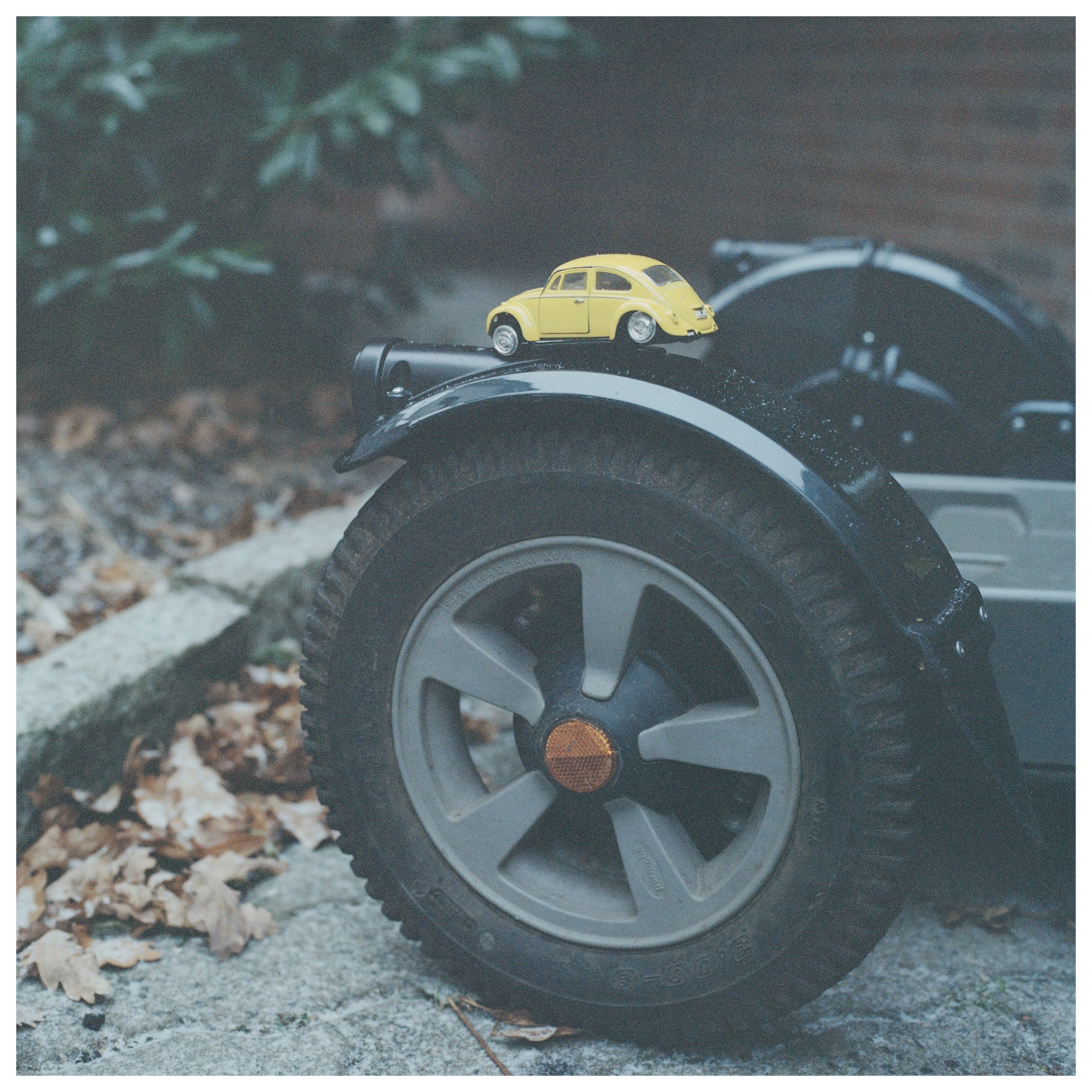
“To be a parent to a completely new baby, then, is about learning new things. In this way the world may once again become magical and new, even for an adult.”
Thinking in new ways
Five years ago, in April, I became a father. This was not unexpected – I had about nine months to prepare myself – but the world nonetheless turned upside down. And my autopilot suddenly switched off. Everything old became new.
I was 35 years old when my son was born, and when a person is 35, one is usually quite well acquainted with oneself. Which is to say: one has become quite set in one’s ways.
The newborn baby cares nothing about this. The new baby couldn’t give a damn about what you are used to and not used to; it doesn’t care in the slightest about what you would like to do, what you had planned on doing.
This is frightening, but it’s also liberating. The baby doesn’t care about your plans, but neither does it have any expectations; it has only needs. Babies have no biases. They have no need for them.
To be a parent to a completely new baby, then, is about learning new things, and about thinking in new ways.
It’s about thinking through what goes without saying and what doesn’t go without saying. It is about examining everything that you do automatically and then de-automising it. In this way the world may once again become magical and new, even for an adult.
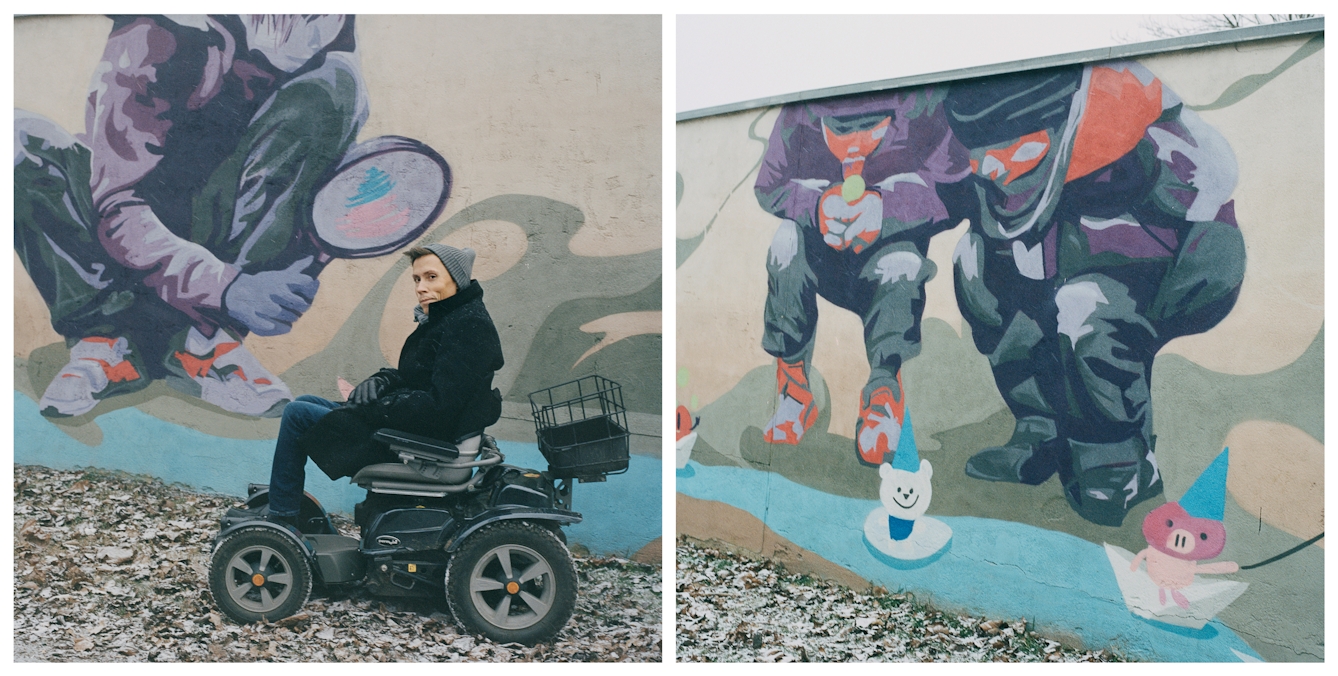
“Improvisation is about seeing familiar things in new ways. It’s about looking at the world as if it was brand new.”
We have long been capable of building machines on wheels, but it is only very recently that we managed to teach machines to walk
For example: what is embodied when we say “to walk”? What movement do we mean? I am able to walk a few steps, but I cannot walk and hold a wriggling child at the same time. I can pick up a rattle from the floor, but I need a grabber tool to do so.
Is this a deficiency, a shortcoming? Perhaps. But it is also an incentive to creativity. I must constantly seek out good solutions, and these must be solutions that work for me. An oft-repeated sentiment is: parenting is the art of improvisation. I can certainly identify with that.
Improvisation is about seeing familiar things in new ways. It’s about looking at the world as if it was brand new.
The New York artist Laurie Anderson has worked quite a bit with performance – with separating the obvious from the self-evident. One of my favourite quotes of hers is: “With each step, you fall forward slightly / And then catch yourself from falling.”
We have long been capable of building machines on wheels, but it is only very recently that we managed to teach machines to walk. Because walking is a complicated movement.
This becomes clear whenever you watch a baby who is close to taking her first step. With each step you fall forward slightly, and then you must catch yourself falling.
Walking is natural, but it is not a certainty.
And when you are no longer transfixed by what is certain, you are able to focus attention on something else.
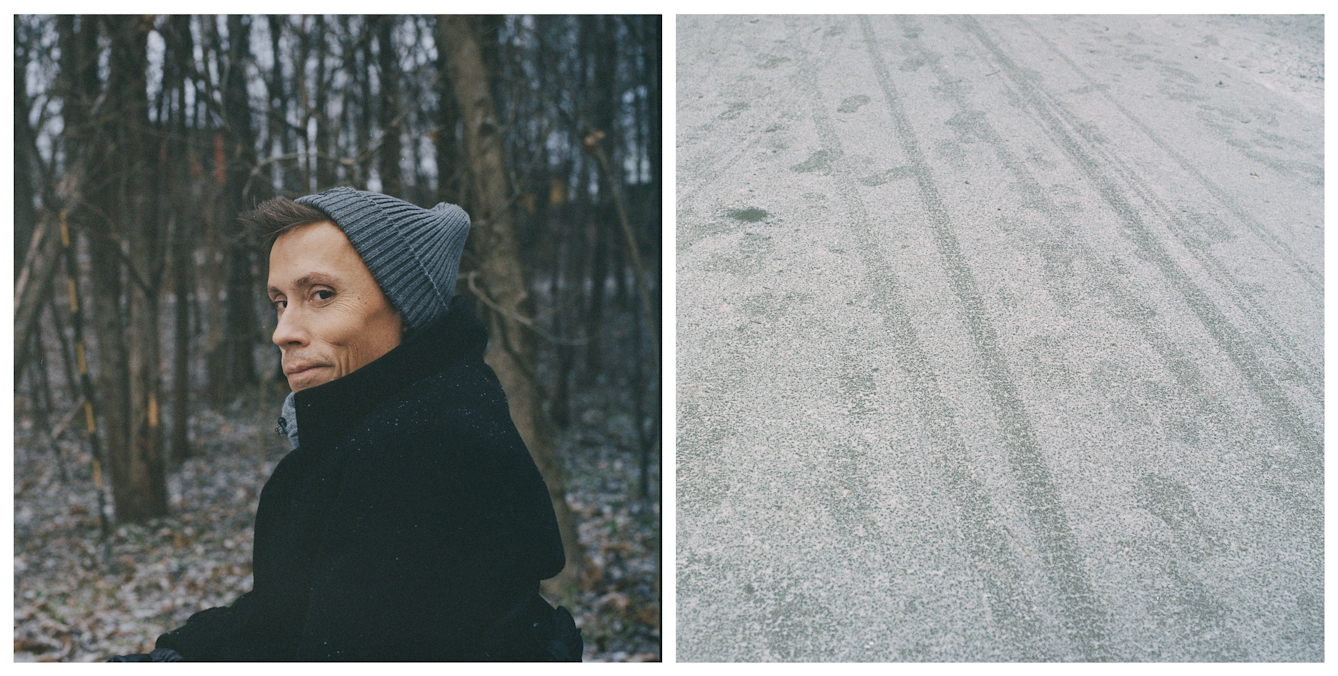
“I did not know that my son would go on to fall in love with my wheelchair. That was not a certainty. But it is what happened.”
Why babies love wheelchairs
In the winter, my son began to crawl, and the first thing he crawled toward was my wheelchair. As I mentioned, it is parked in the entryway, and every morning, as soon as he was let loose on the floor, he dashed over to put his hands on it.
This isn’t so odd, if you think about it: it’s the world’s largest toy car. And it had always been there; it was a certain part of his world.
I did not know that my son would go on to fall in love with my wheelchair. That was not a certainty. But it is what happened.
My wife, Ida, uses an expression whenever a child turns to look at my wheelchair on the street. “There’s that hungry wheelchair gaze,” she says.
We see the hungry wheelchair gaze all the time. It is greedy and direct. The children look as if they want to eat my wheelchair.
Sometimes they actually attempt this. The summer that we had a completely new baby, Ida and I sat in the park, trying to breathe calmly, in spite of the fact that we were out with a teensy-weensy little person we hardly knew.
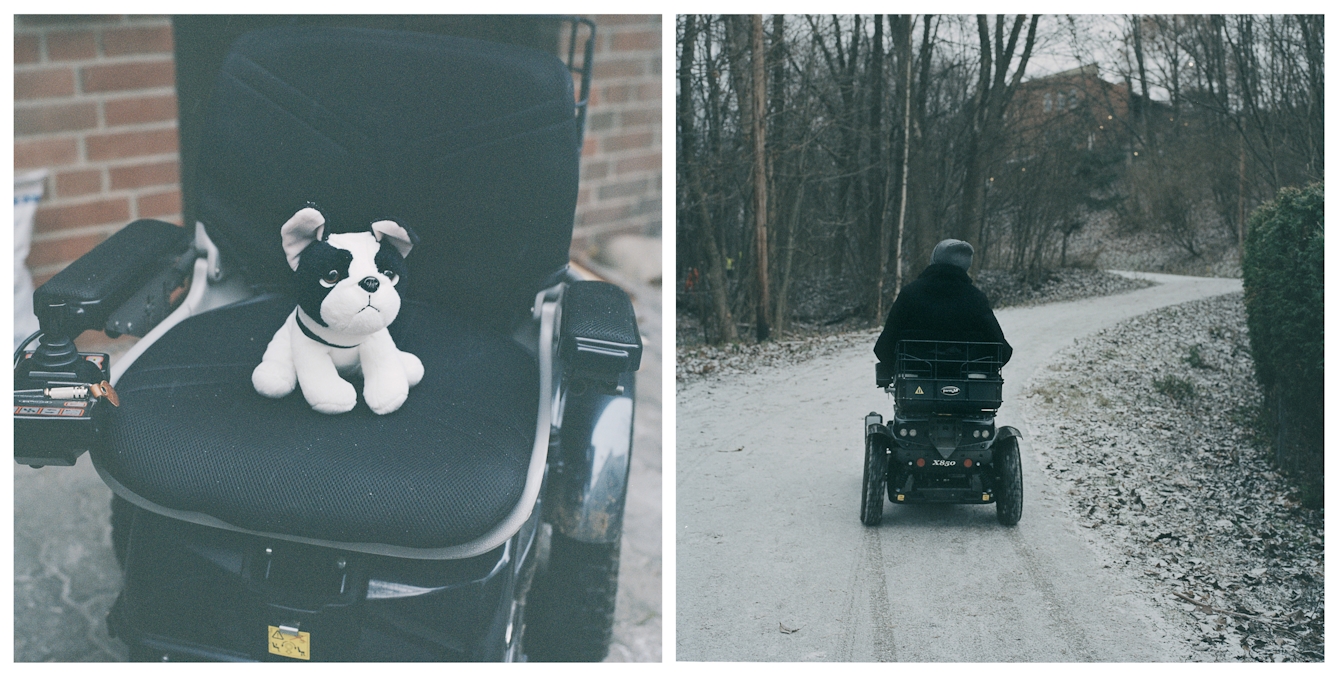
“We see the hungry wheelchair gaze all the time. It is greedy and direct. The children look as if they want to eat my wheelchair.”
A wobbly child around one year old, or maybe 14 months, teetered toward us.
A gigantic baby, we thought. A monster baby. The baby that flattened a city, Godzilla-style.
The monster baby grinned at us and had just managed to place its four small teeth into one of the tyres of my wheelchair before its mother came sweeping in to pick the child up.
We smiled at her, and she smiled at us.
“That wheel isn’t exactly clean, no,” we agreed, and then we all sat chatting for a while as the monster baby continued, in vain, to take another bite out of the wheelchair. And this is the norm. Most often, we have a nice chat.
Every now and then though, it still happens that the adults look shamefaced. Every now and then they yank their four-year-olds quickly away when the four-year-olds ask, “Why is that man in a wheelchair?” or simply “What is he?” Every now and then the adults will reply, their voices terse, “Shh! Don’t ask that!” or, “We’re leaving right now!”
But more often, increasingly so, they smile. Maybe it’s because there are more wheelchair users now than there used to be; maybe we have all become more used to wheelchair users being just like everyone else.
Maybe it’s also that the adults have learned to see wheelchairs through the eyes of their children. Not as symbols of exclusion and vulnerability and marginalisation, but as natural parts of the world.
Just like those of us who use them.
About the contributors
Jan Grue
Jan Grue was born in 1981 in Oslo. The author of a wide-ranging body of work in fiction, nonfiction, children’s books, and academic literature, he is also Professor of Qualitative Research at the University of Oslo. ‘I Live a Life Like Yours‘ was published in Norway in 2018 and has been hailed as a major milestone in Norwegian non-fiction. It is the first Norwegian non-fiction book to be nominated for the Nordic Council’s Literature Prize in 50 years.
Linda Bournane Engelberth
Linda Bournane Engelberth is a Norwegian-Algerian artist based in Oslo. She has had a number of exhibitions all over the world and has won several awards for her photography. Her most recent exhibitions include Die Haus der Photographie, Deichtorhallen, Hamburg, Fotogalerie Wien, Spriten Kunsthall in Skien, Norway, among several other exhibitions in Norway, the US and Europe. Engelberth’s work is characterised by its own calm and aesthetic, while the content of her work focuses on identity through personal and subjective narratives, as well as rural communities which are in flux.
